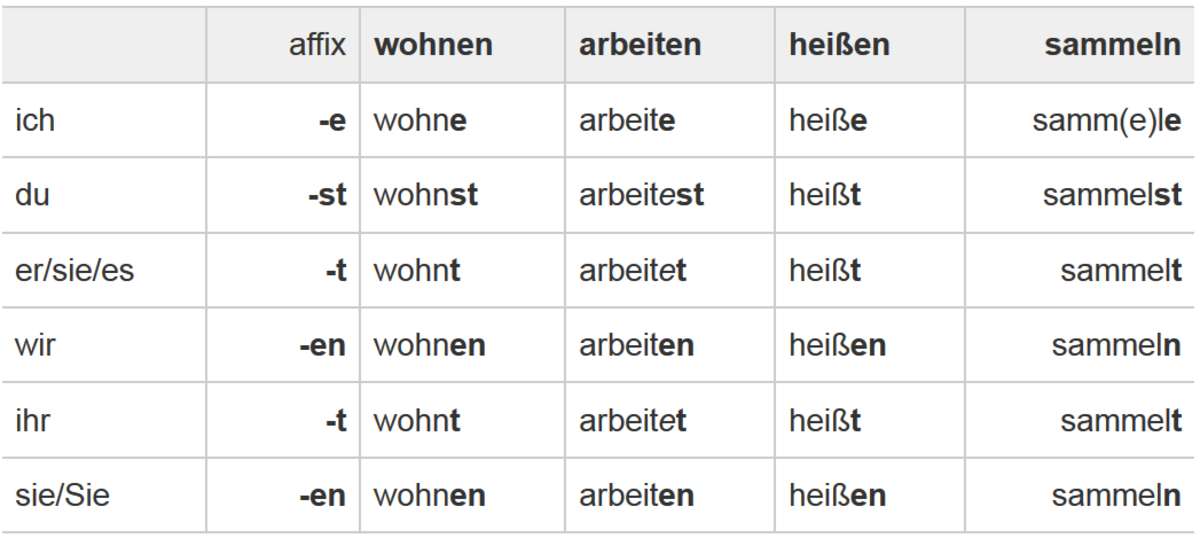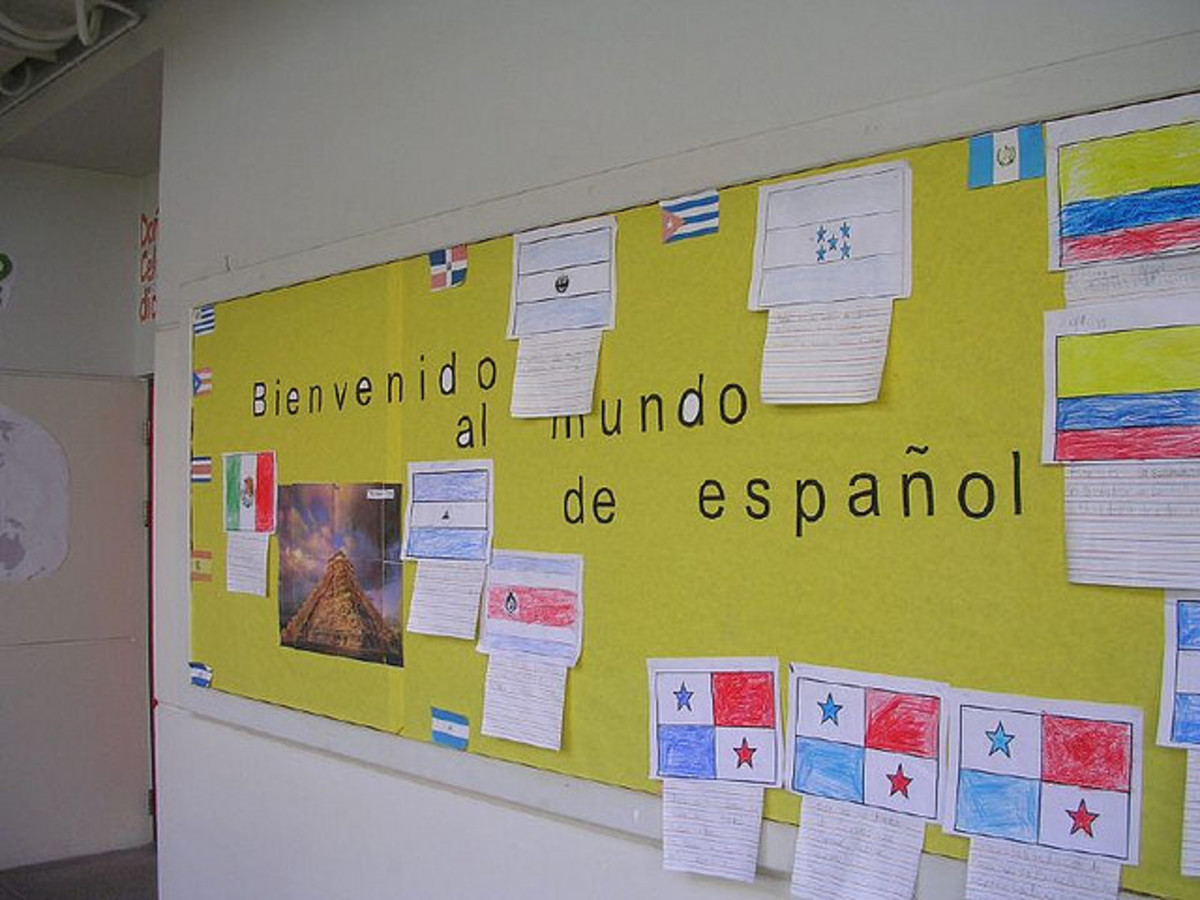Spanish Grammar for beginners: Present tense (Part 2)
Practise your Spanish, in Spain

The Infinitive
In the Spanish Grammar: Verbs for Beginners (Part 1) we learnt some basic vocabulary. Let’s look at how VERBS can help to 'SUPERGLUE' our lexical items (words) together!
There are three types of verbs in Spanish and they are classified according to their ‘infinitive’ form.
‘Infinitive’ means, as the name suggests, the neutral, unlimited form of the verb with no 'WHO' or 'WHEN' implied. It is used as the ‘name’ of the verb.
For example in the English sentence
‘I’m going to Spain next week', the verb is ‘I’m going’. The ‘INFINITIVE’ of ‘I’m going’ is ‘TO GO'.
In the same way, ‘I went to Paris last year’; the verb is ‘went’ and the INFINITIVE of ‘went’ is also ‘TO GO’.
In: ‘My sister has gone to the supermarket’ the verb is ‘has gone’ and the INFINITIVE of ‘has gone’ is ‘TO GO’.
The different verb forms I'm going/ I went/ she has gone, all derive from a common base; the basic verb inifinitve -'TO GO'.
CONJUGATIONS
To live.....To eat.......To speak. How important do they sound? These are all 'infinitives' in English. The equivalent of these infinitives in Spanish are VIVIR, COMER, and HABLAR. You can soon notice infinitives in Spanish as they all end in either....IR, ....ER, or.....AR. They are the glue you are going to need to make any sense in your conversation. In my teaching experience, I meet learners time and time again who insist they don't want to learn any grammmar at all. They tell me that all they want to do is to be able to hold a conversation and be able to understand what is being said back to them. It can take me a little while to convince them that the reason WHY they are not able to do that yet, and sometimes even after quite a few lessons, is precisely because they haven't assoimilated any grammar yet - especially verbs!
The WHO and the WHEN
There are different set of rules that all verbs follow to describe the WHO and the WHEN in everything we say. It is important to understand that verbs in Spanish can be grouped into 3 different categories called CONJUGATIONS. Each CONJUGATION has certain similarities. To 'conjugate' or specify who and when in a sentence, you will need to start understanding the differences between these groups or 'conjugations'.
1st group/conjugation are all the verbs ending in …..ar (like ‘hablar’-to speak)
2nd group/conjugation are all the verbs ending in ….er (like 'comer'- to eat)
3rd group/conjugation are all the verbs ending in.. ir (like 'vivir'- to live)
ENGLISH ALSO HAS LOTS OF IRREGULARITIES! It's just that we're used to them as adults and haven't noticed them because they are so familiar!
But then, just as in English, there is a very important group of verbs known as ‘IRREGULAR’ verbs which do not fall into the set of rules governing the Spanish verb:
In English the verb ‘TO GO’ is an irregular verb because the past of ‘I GO’ is ‘I WENT’ and not ‘I GOED’.
‘TO SEE’ is an irregular verb because the past of ‘I SEE’ is 'I SAW' and not 'I SEED'
SOME SPANISH IRREGULARITIES
In Spanish, some very commonly used verbs happen to be irregular in form: for example
SOY (I am) from the infinitive SER:- TENGO (I HAVE) from the infinitive TENER :-
VOY (I GO, or I'M GOING) from the infinitive IR:- and QUIERO (I WANT) from the infinitive QUERER
LET'S DO SOME SERIOUS CONJUGATING!
Spanish people have to learn these irregularities in the English language in the same way students of Spanish must master the rule and the irregularities.
Using the examples above then we can begin to ‘conjugate’ a Spanish verb by deciding WHO we are talking about. At the moment by way of example we will concentrate on ‘I’; and then we can choose WHEN and as way of introduction we can start with NOW. To conjugate the verb then, as with English verbs also, we have chosen WHO and WHEN.
1st group: Hablar. WHO (me) and WHEN (now) = HABLO. ( Pronunciation: ‘ablo’ =I speak)
2nd group: Comer. WHO (me) and WHEN (now) = COMO. (Pron: ‘como’ = I eat)
2nd group: Beber. WHO (me) and WHEN (now) = BEBO. (Pron: ‘bebo’ = I drink)
3rd group: Vivir WHO (me) and WHEN (now) =VIVO. (Pron : ‘bibo’ = I live)
Some verbs are a little irregular in this ‘first person’ (I ), and Present Tense (now) form and it is best for learners to notice this immediately!
SER: (to be) gives SOY (I am)
TENER (to have) gives TENGO (I have)
Ir (to go) gives VOY (I go)
QUERER: (to want) gives QUIERO (I want)
Let your Spanish flow easily!

The GREAT NEWS about Spanish grammar is that the negative of the verb is SO SIMPLE! There are no words to learn for ISN’T, AREN’T, CAN’T, DON’T, DOESN’T, HASN’T, HAVEN’T, DIDN’T , WASN’T, WON’T, WOULDN’T ! Imagine how difficult that is for Spanish speakers learning English! In Spanish the word ‘NO’ is simply placed before the normal verb! How cool is that?
So let’s superglue some words together with the verb! (NOTE: Spanish pronunciation differs from country to country and even from region to region where Spanish is spoken. Emphasis is underlined in black)
Soy inglés (Pronunciation: Soy inglays) I am English.
No soy español. ( Pron: espanyol) I am not Spanish
Tengo dinero. I have got some money.
No tengo dinero. I haven’t got any money.
Quiero agua , por favor. (Pron. Kiero agwa, por fabor) I want some water, please.
No quiero cerveza, gracias. (Pron: No kiero therbetha, grathias) I don’t want any beer, thanks.
Voy a la farmacia mañana (Boy a la farmatheea, manyana) I’m going to the chemist’s tomorrow.
Hablo inglés (Pron: Ablo inglays) I speak English.
No hablo español (Pron: No ablo espanyol) I don’t speak Spanish
Found this helpful?
Continue to read more about Spanish in Part 3 of this short series of articles, designed to solve the mysteries and unravel the intricacies of the Spanish verb.
Please leave a comment below with suggestions, your own personal experiences of learning a second language etc.








